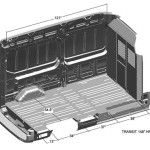How To Fix Scratched Car Interior Plastic
Scratches on a car's interior plastic components detract from its overall aesthetic appeal and can diminish its resale value. These blemishes are often the result of everyday wear and tear, such as keys scraping against the dashboard, passengers brushing against door panels, or cargo shifting in the trunk. Fortunately, most minor scratches on interior plastic can be effectively repaired with readily available tools and materials, restoring the vehicle's interior to a more presentable condition. This article provides a comprehensive guide to addressing scratched car interior plastic, outlining the necessary steps and precautions for achieving professional-looking results.
The severity of the scratch dictates the appropriate repair method. Superficial scratches, which only affect the surface layer of the plastic, can often be buffed out using specialized plastic polishes. Deeper scratches, however, may require more involved techniques, such as filling the scratch with a plastic filler compound before sanding and refinishing. Regardless of the chosen method, proper preparation and meticulous execution are crucial for achieving a seamless and durable repair.
Identifying the Type of Scratch and Assessing the Damage
Before attempting any repairs, accurately assessing the type and severity of the scratch is paramount. This assessment will determine the most appropriate repair method and the specific materials required. Superficial scratches typically appear as light abrasions that can be felt with a fingernail but do not penetrate deeply into the plastic. These scratches often appear white or gray against the surrounding plastic. Deeper scratches, on the other hand, are more pronounced and may exhibit a visible groove or indentation. In some cases, deeper scratches may even expose the underlying color or material of the plastic component.
To assess the scratch, thoroughly clean the affected area with a mild soap and water solution. This removes any dirt, grime, or debris that could obscure the extent of the damage. Once the area is clean and dry, carefully examine the scratch under good lighting. Use a magnifying glass if necessary to get a closer look. Run a fingernail gently across the scratch. If the fingernail catches on the edge of the scratch, it indicates a deeper scratch that will require more extensive repair.
Furthermore, consider the texture and color of the surrounding plastic. Matching the repair materials to the original texture and color of the plastic is essential for achieving a seamless finish. Different types of interior plastic have varying textures, ranging from smooth and glossy to matte and textured. If the scratch is located on a textured surface, it may be necessary to replicate the texture during the repair process. Similarly, matching the color of the repair materials to the original color of the plastic is crucial for preventing noticeable color discrepancies.
Repairing Superficial Scratches with Plastic Polish
Superficial scratches can often be effectively removed using plastic polish. Plastic polish contains mild abrasives that gently buff away the surface imperfections, restoring the plastic's original shine and clarity. This method is suitable for scratches that are not deep enough to penetrate the plastic's surface layer. The success of this method depends on the quality of the plastic polish and the careful application of the polishing process.
The first step is to thoroughly clean the scratched area with a clean, lint-free microfiber cloth and a plastic-safe cleaner. Ensure that all dirt, grime, and debris are removed before proceeding. Once the area is clean and dry, apply a small amount of plastic polish to a clean microfiber cloth. Gently rub the polish onto the scratched area using a circular motion. Apply moderate pressure and work the polish into the scratch for several minutes.
After polishing, use a clean section of the microfiber cloth to wipe away any excess polish. Inspect the area under good lighting to assess the results. If the scratch is still visible, repeat the polishing process. Multiple applications may be necessary to completely remove the scratch. Once the scratch is no longer visible, buff the area with a clean, dry microfiber cloth to restore the plastic's original shine. For best results, use a dedicated plastic polish designed for automotive interiors. Avoid using abrasive compounds or harsh chemicals, as these can damage the plastic surface.
Repairing Deeper Scratches with Plastic Filler
Deeper scratches that penetrate the plastic's surface layer require a more involved repair process. In these cases, using a plastic filler compound is necessary to fill the scratch and create a smooth, even surface. Plastic filler is a putty-like substance that bonds to the plastic and can be sanded and shaped to match the surrounding area. This method requires careful preparation and attention to detail to achieve a seamless and durable repair.
Begin by thoroughly cleaning the scratched area with a plastic-safe cleaner and a clean microfiber cloth. Use a fine-grit sandpaper (e.g., 400-grit) to lightly sand the edges of the scratch. This creates a rough surface that will allow the plastic filler to bond more effectively. Be careful not to sand too aggressively, as this can damage the surrounding plastic.
Next, apply a small amount of plastic filler to the scratch using a plastic applicator or a small putty knife. Overfill the scratch slightly, as the filler will shrink as it dries. Allow the filler to dry completely according to the manufacturer's instructions. This typically takes several hours or overnight. Once the filler is dry, use progressively finer grits of sandpaper (e.g., 400-grit, 600-grit, 800-grit) to sand the filler flush with the surrounding plastic. Be careful not to sand too much, as this can create a depression. Take your time and work slowly, checking your progress frequently.
After sanding, clean the area thoroughly with a tack cloth to remove any sanding dust. If necessary, apply a plastic primer to the repaired area to promote adhesion of the paint. Once the primer is dry, apply several thin coats of plastic paint that matches the original color of the plastic. Allow each coat to dry completely before applying the next. After the final coat of paint has dried, apply a clear coat to protect the paint and provide a glossy finish. Buff the repaired area with a plastic polish to restore the plastic's original shine. If the surrounding plastic is textured, consider using a texture spray to replicate the texture on the repaired area.
Proper color matching is essential for achieving a seamless repair. Bring a sample of the plastic to an automotive paint supply store to have the color matched. Alternatively, use a color matching system to identify the correct paint code. When applying the paint, use light, even strokes to avoid creating runs or drips. Apply multiple thin coats rather than one thick coat. This will result in a smoother, more even finish.
For textured surfaces, texture spray can be used to replicate the original texture. Practice applying the texture spray on a piece of cardboard before applying it to the repaired area. This will allow you to adjust the spray pattern and achieve the desired texture. Apply the texture spray in thin, even coats, allowing each coat to dry completely before applying the next. Once the texture spray has dried, lightly sand the area with a fine-grit sandpaper to blend the texture with the surrounding plastic.

How To Fix Scratched Interior Panels In Your Car Holts

How To Remove A Scuff Mark Or Scratch From Your Car Dashboard
How To Remove Scratches From A Car S Interior Ifixit Repair Guide

Here S How You Can Get Rid Of Scratched Plastic In Your Car It So Easy The Sun
How To Remove Scratches From A Car S Interior Ifixit Repair Guide

How To Remove Scratches From Car Interior Fantastic Services
How To Remove Scratches From A Car S Interior Ifixit Repair Guide
How To Remove Scratches From A Car S Interior Ifixit Repair Guide

Fix Scratched Car Interior Trim Panels Easy Remove Scratches
Interior Plastic Scratch Repair Diy How To Honda Odyssey Forum
Related Posts








